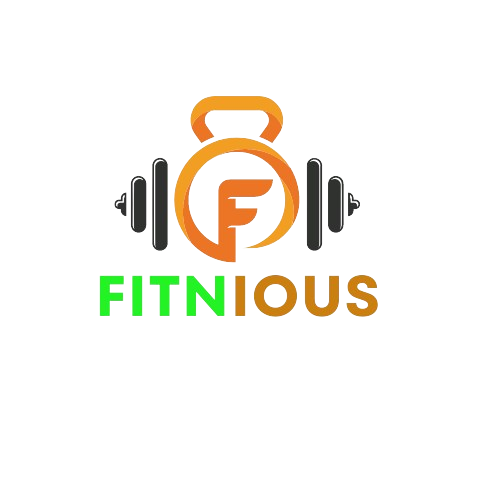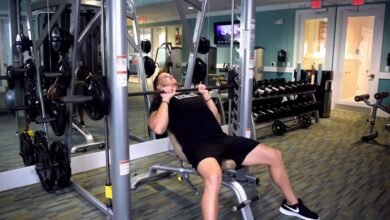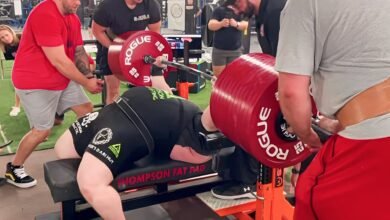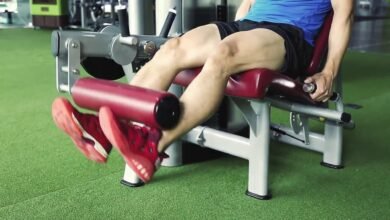The pulsing squat, a modern twist on the traditional squat, is incredibly effective for enhancing lower body electricity, improving muscle patience, and increasing calorie burn. This guide will stroll you through everything you want to recognize about pulsing squats, from their blessings and preparatory steps to a detailed execution method and variations to boost your exercise routine.
At its core, the beating squat is a dynamic variant of the conventional squat. It includes a standard squat combined with a pulsing movement at the lowest of the squat. This pulsing action increases the time your muscle groups are under anxiety, intensifying the exercise and focusing on the muscles more efficiently.

What is a Pulsing Squat?
Unlike a regular squat, which consists of a simple downward and upward motion, the beating squat provides a mini squat or pulse at the bottom of the movement. This pulse complements muscle activation inside the glutes, quadriceps, hamstrings, and middle, offering extra challenging and adequate exercise.
Benefits of Pulsing Squats
Pulsing squat includes a myriad of blessings:
Increased Muscle Endurance: The pulsing motion calls for your muscle groups to live engaged for an extended duration, which builds patience.
Enhanced Lower Body Strength: Regularly performing a beating squat can lead to sizable enhancements within the strength of your lower frame muscle tissues.
Improved Flexibility and Balance: The full range of motion in pulsing squats enhances flexibility, even as the constant motion improves balance.
Calorie Burn: The dynamic nature of the beating squat method is that they burn greater calories than conventional squats, aiding in weight reduction and frame composition upgrades.
Posture and Mobility: Engaging your center and decreasing body muscles can cause better posture and increased mobility.

Preparing for Your Pulsing Squat Workout
Necessary Equipment
The beauty of lies in their simplicity; no unique system is needed. You can perform them anywhere, whenever. However, adding weights (like dumbbells or a kettlebell) can grow the assignment as you develop.
Warm-Up Exercises
A right heat-up is crucial to assemble your muscle groups and prevent accidents. Start with 5-10 mins of mild cardio, including jogging or skipping, followed by dynamic stretches focusing on the legs and hips.
The Step-by using-Step Guide to Pulsing Squats
Starting Position
Begin along with your toes shoulder-width aside; feet barely grew to become out. Stand tall, with your shoulders pulled lower back and your core engaged.
The Pulsing Movement
Slowly bend your knees to lower your body into a squat, instantly keeping your chest and back up. Once you reach the bottom of the squat, perform a tiny pulse or bounce by barely lowering and elevating your frame instead of coming straight up. Perform this pulse 2-three instances earlier than returning to the starting position.
Breathing Technique
Breathing effectively is essential. Inhale as you decrease into the squat and exhale at some stage in the pulsing movement. This not only facilitates muscle activation but also keeps you targeted.
Common Mistakes to Avoid
To maximize the advantages of and reduce the chance of damage, avoid those commonplace mistakes:
- Allowing your knees to head beyond your feet may pose undue stress for your knees.
- Lifting your heels off the floor can cause balance problems and decreased effectiveness.
- Rounding you’re returned may motivate returned aches and diminish the exercise’s blessings.
- Variations of Pulsing Squats
- Once you have mastered the fundamental pulsing squat, you can strive versions to preserve your workout routines exciting and challenging:
Weighted Pulsing Squat: Hold a dumbbell in the front of your chest or at your facets to feature resistance.
Pulsing Sumo Squat: Adopt a much broader stance with your feet pointed outwards, focusing on the inner thighs.
Single-Leg Pulsing Squat: Balance on one leg while performing the pulsing squat to boost the difficulty and goal stability of muscle tissue.
Incorporating Pulsing Squats into Your Routine
For novices, begin with 2-three units of 10-15 pulsing squats specializing in shape instead of velocity. As you become extra snug, grow the variety of pulses and sets, or introduce versions to maintain challenging your muscle tissues.

Recovery and Post-Workout Care
Proper healing is as crucial as the workout itself. Incorporate stretching and foam rolling into your submit-workout routine to enhance muscle restoration and versatility. Additionally, ensure you consume a balanced diet with ok protein to aid muscle restoration and boom.
Conclusion
Pulsing squats are a flexible and robust addition to any fitness habit, suitable for various health tiers and dreams. By incorporating them into your exercises, you can enjoy the blessings of improved strength, staying power, and flexibility, contributing to a more fit, extra-balanced frame.
FAQs about Pulsing Squat
Are there any precautions to take while doing pulsing squats?
Always recognize keeping the proper form to avoid injury. If you've got present knee or back troubles, consult an expert before adding pulsing squats to your routine.
Can pulsing squats enhance athletic overall performance?
The expanded strength, persistence, and flexibility gained from pulsing squats can drastically decorate athletic overall performance in many sports.
How quickly can I see the effects of doing pulsing squats?
Results can range based on your health stage, frequency, and intensity of workouts. However, improvements can typically be noticed within some weeks with steady attempts.
Can I do pulsing squats every day?
While pulsing squats are commonly secure, allowing your muscle mass time to improve is crucial. Incorporating rest days or alternating with distinct sporting activities can prevent overtraining and make specific top-quality effects.





